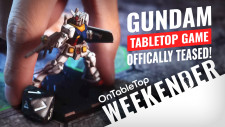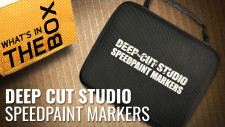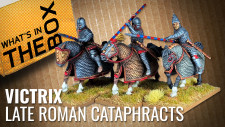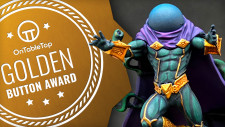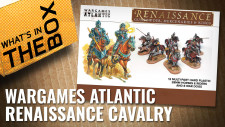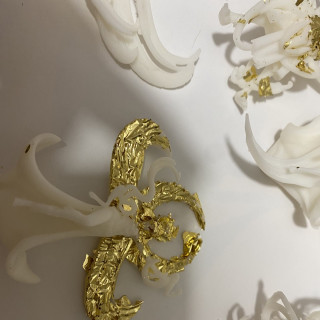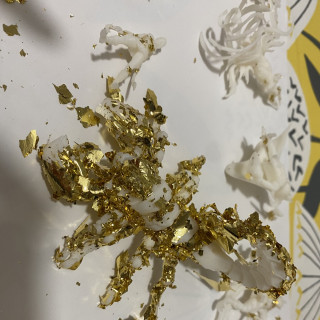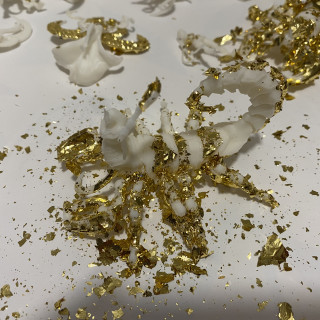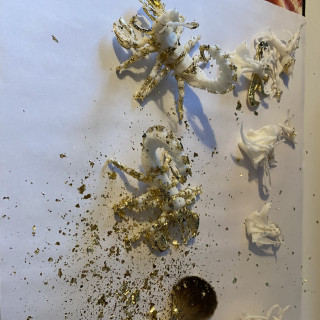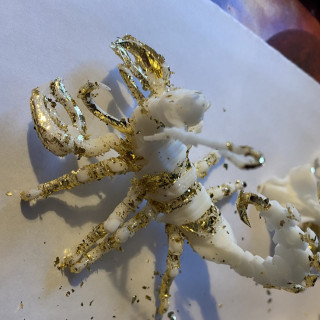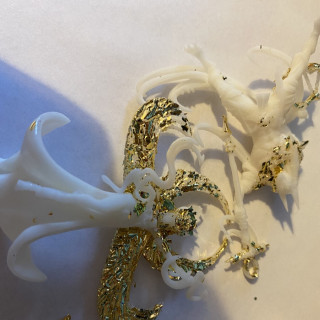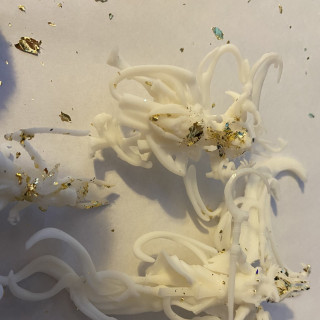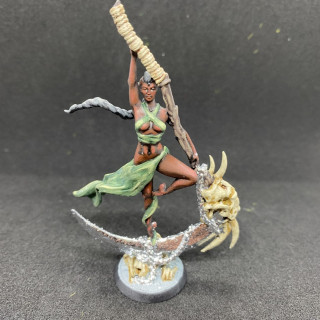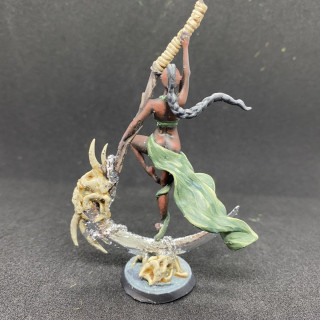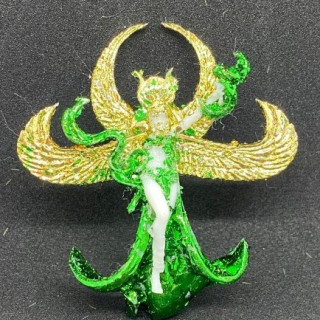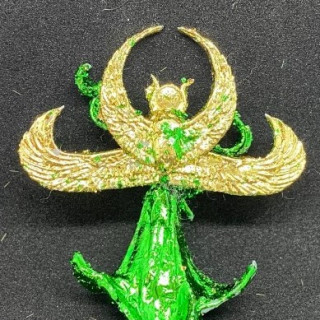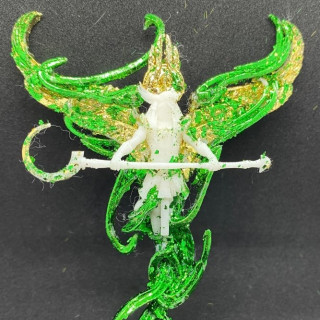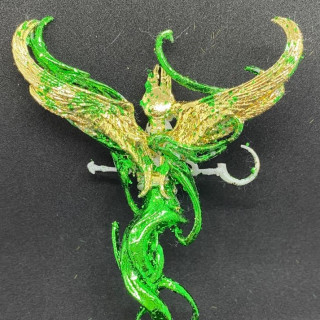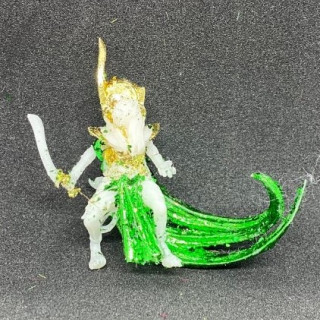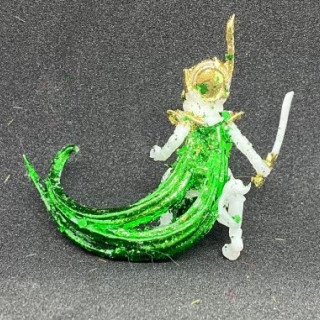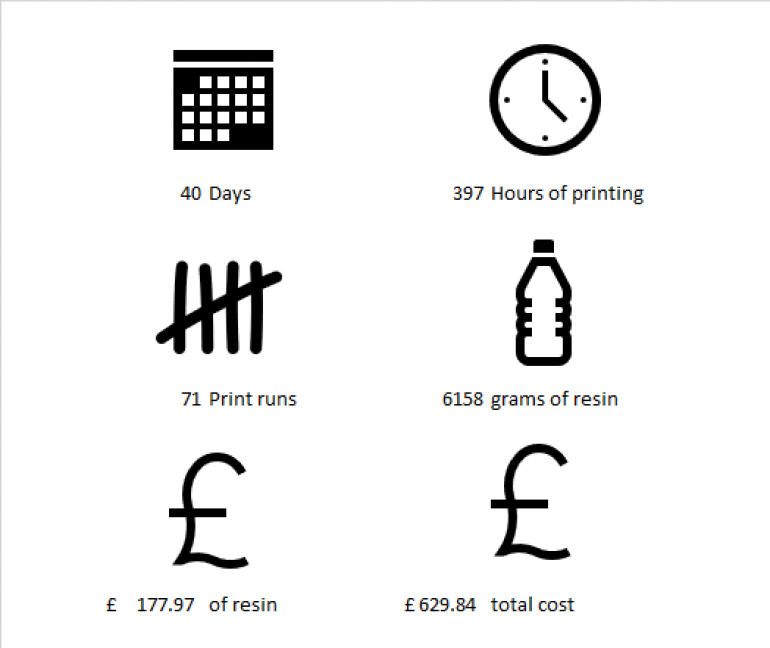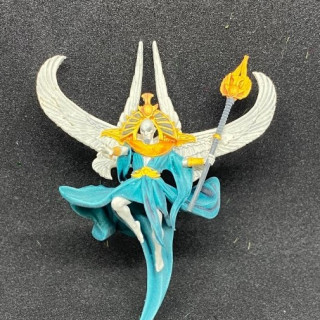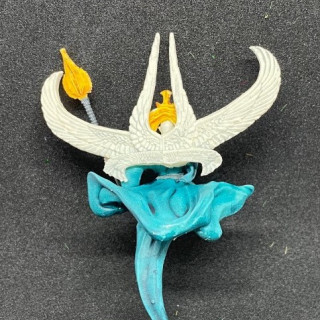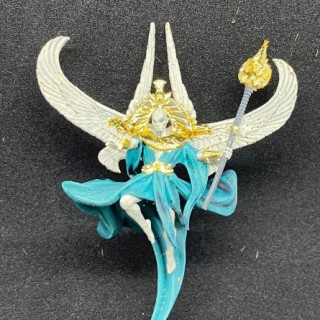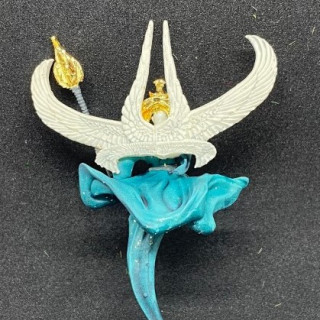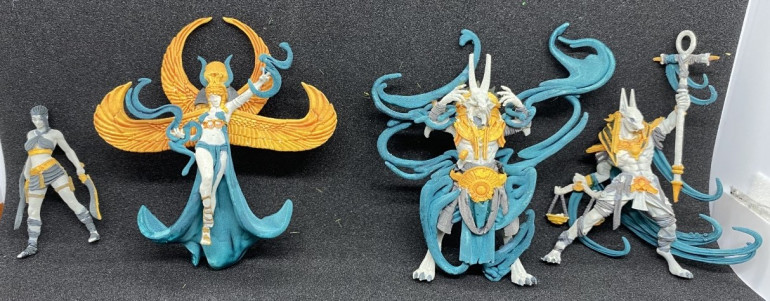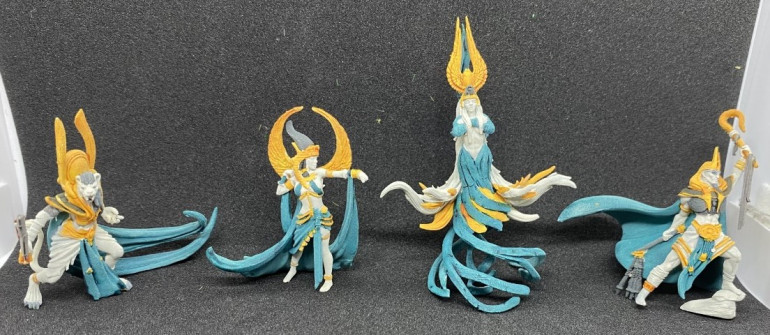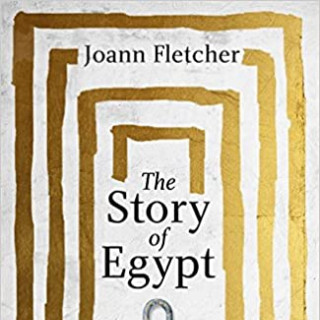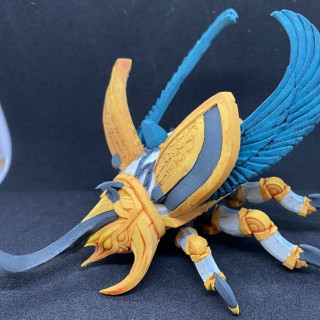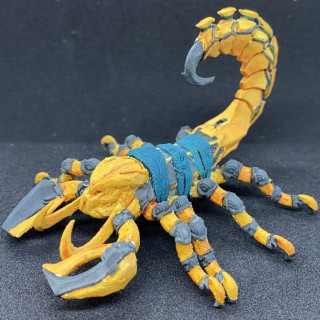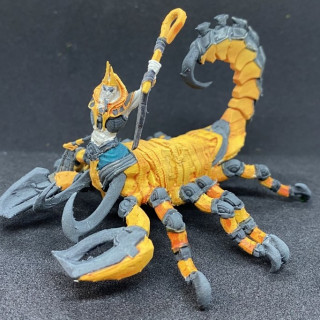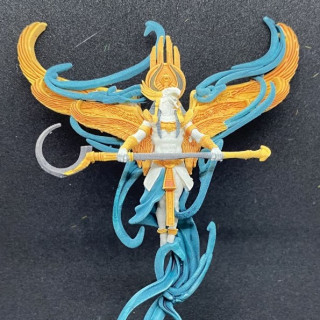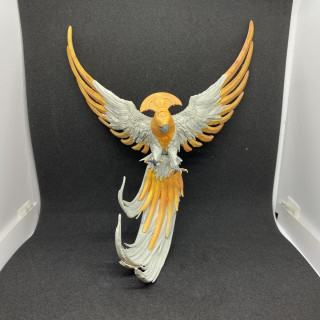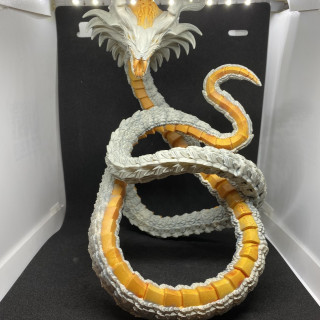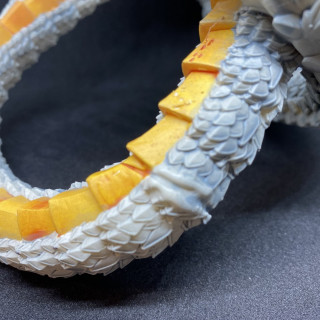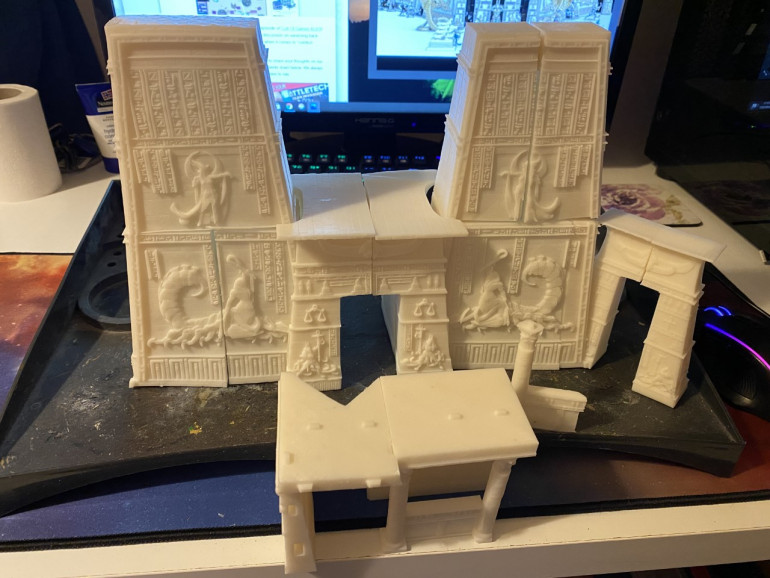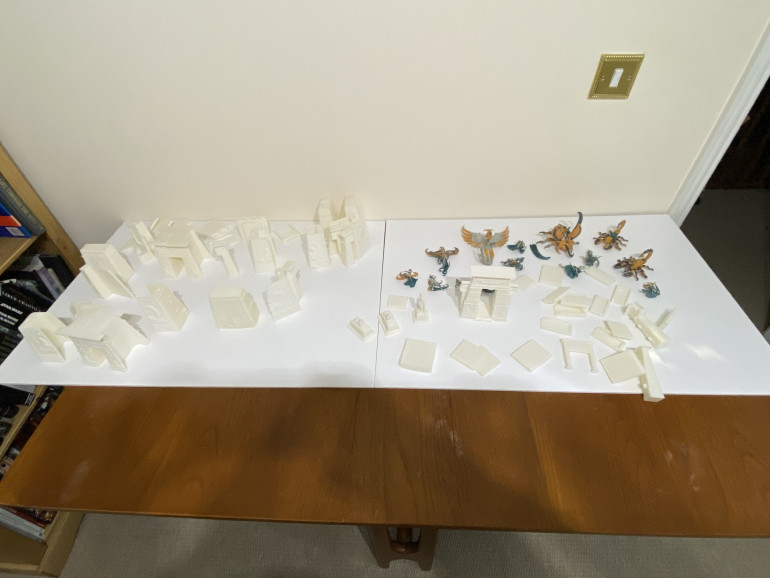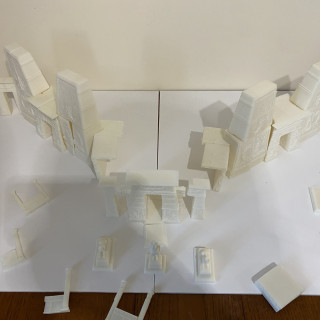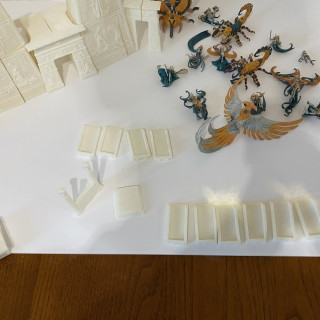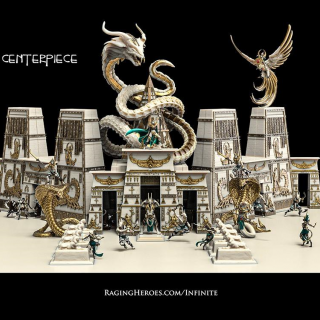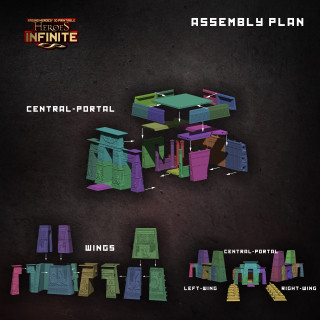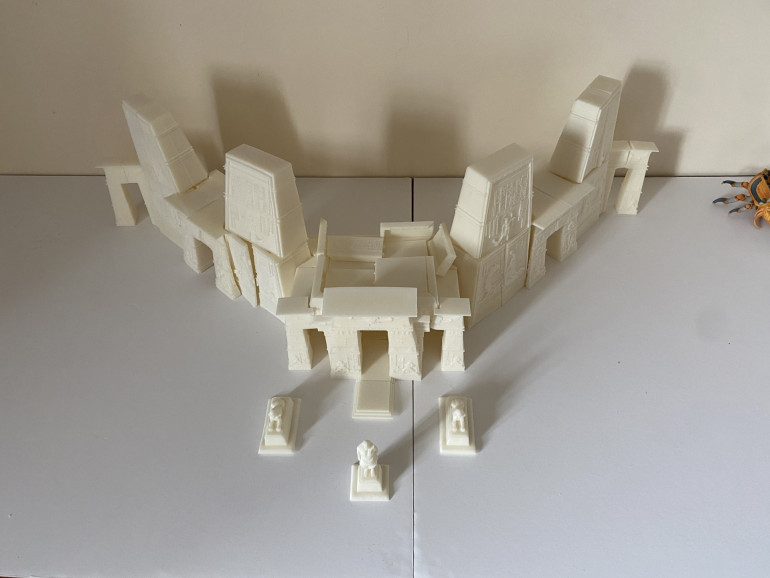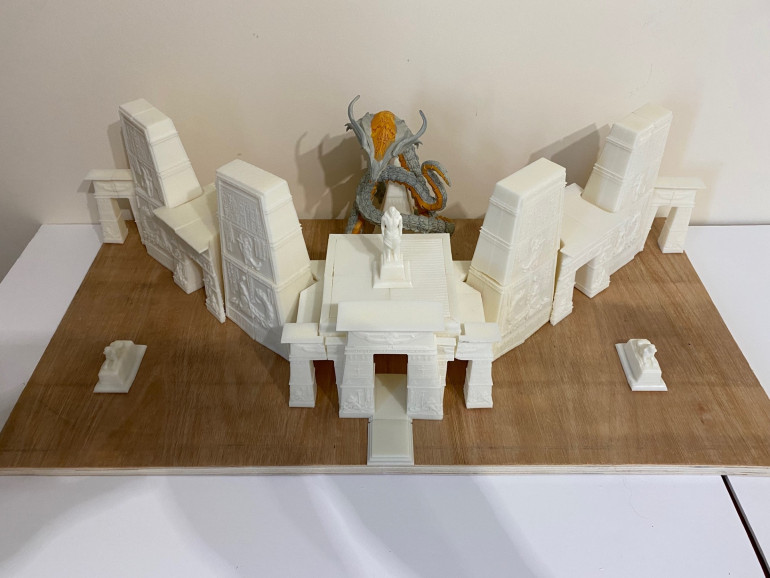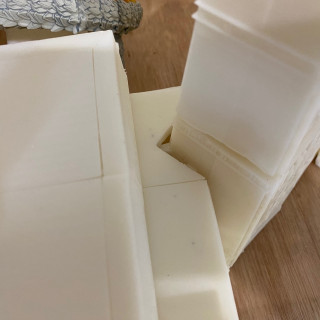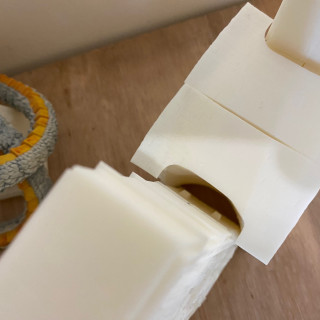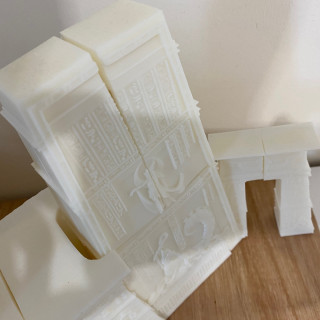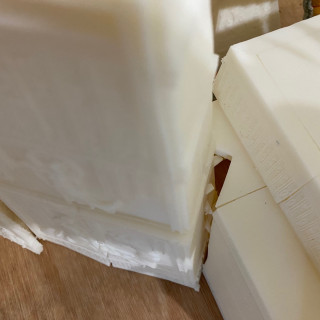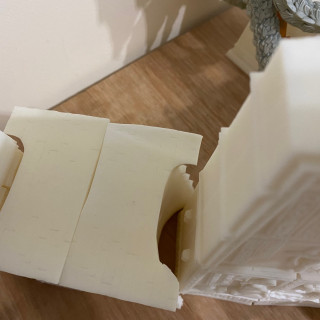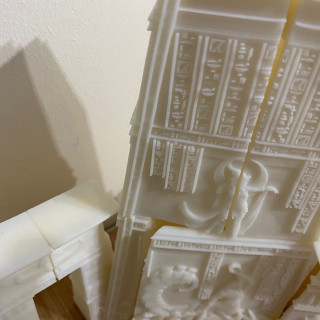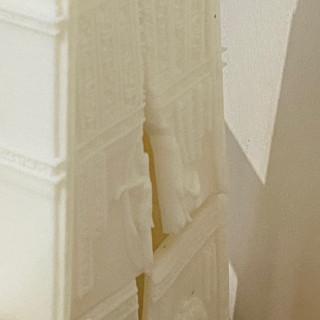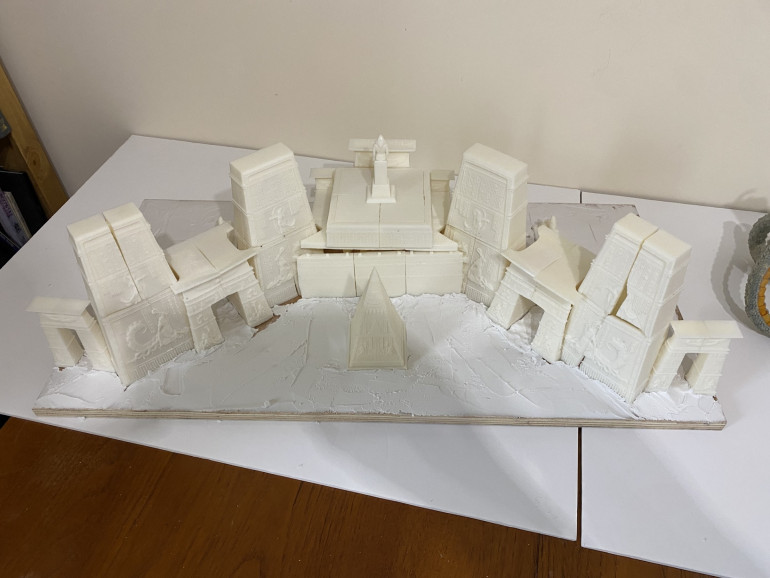
Egyptian Mythology Display – Spring Clean 2024
Recommendations: 510
About the Project
With pandemic lethargy setting in (I'm still not comfortable attending gaming clubs) I was looking for a different style of project. A also wanted to use my resin printer more. Marrying the two I decided to print off all the Raging Heroes' Gods and Heroes of Egypt models and produce a diorama/display with them.
Related Company: Raging Heroes
Related Genre: Fantasy
Related Contest: Spring Clean Hobby Challenge 2024
This Project is Completed
Inspiration and objectives
There were a number of reasons why I decided to do this project:
3D printing
I’ve had my Sparkmaker resin printer for a coupe of years and used it here and there but I really wanted to get into using it more. As it turns out it broke very early into the project so I had to replace it with an Elegoo Mars 2 Pro. This turned out to be a blessing as the new printer is far superior. For more details on my 3D printing I refer you to my project dedicated to the topic.
https://www.beastsofwar.com/project/1584420/
Produce a display
I’m very fortunate that my other half allows me to have two display cases in our living room where I can display my best models. However it has become a rather eclectic mix of models. What I would like to add is a dedicated display or diorama. We are low on floor space but we have plenty of bare walls I could place a display on. You might think I was inspired by Warzan’s shelf dungeon project, but to be honest I completely forgot about it. I in fact got the idea from a Youtuber I watch, Nerdforge, who produced a “shelforama”.
Experiment with gold leaf
There are a lot of models in this collection so I don’t want to get bogged down in painting them all in the traditional way. That many models could take me a year based on past similar projects.
The renders produced by Raging Heroes are very striking where most of the models could be bare resin but with certain colours picked out. This gave me the idea of using gold leaf on select areas of the models. I’ve never used gold leaf on anything before but I think its worth a try.
Put Mel the Terrain Tutor’s book to use
I bought and read Mel’s book but have yet to put any of it to use. The models will need to go on something (only if it turns out to be a fairly basic desert area) so when I get to it I’ll use the information in Mel’s book to up my game.
Starting with gold leaf
There are plenty of tutorials on Youtube about using gold leaf so I won’t bother to link to specific ones here.
The key steps are:
- Apply a suitable glue
- Wait for the glue to go tacky (timing depends on glue used)
- Place gold leaf over area and gently brush down
- Wait for glue to fully dry then brush off excess
- Seal with a varnish
Normally I would have gone to a local hobby store to buy this sort of thing but avoiding an un-necessary journey I bought everything from Amazon.
This is the glue I went with, chosen because I only have wait 30 minutes before applying the gold leaf. Some other glues had much longer wait times. https://www.amazon.co.uk/gp/product/B00J8Q0F84/ref=ppx_yo_dt_b_asin_title_o07_s00?ie=UTF8&psc=1
Shopping around I found that you can get coloured copper leaf. Not only is this cheaper than gold leaf but the variety of colours will allow me to apply all the different colours I want to the project.
https://www.amazon.co.uk/gp/product/B08HQS1F1G/ref=ppx_yo_dt_b_asin_title_o07_s00?ie=UTF8&psc=1
I’ll apply the glue with my usual paint brushes and apply the gold leaf with some cheap kid’s craft brushes. Once complete I’ll seal the models with the usual model varnishes.
First results with gold leaf
For my first attempt I used some misprinted parts from the large Apophis model. The model has a ridge of large articulated plates along the length of its snake-like body that are rendered gold in the Raging Heroes images.
I didn’t take photos but I learned something. These misprints had not been through the UV curing process and still felt a bit rubbery. This is enough for the gold leaf to stick to, so I had gold leaf on parts of the model where no glue had been applied. For the rest of the project I will have to put all the models through a UV curing process before applying the gold leaf.
Apart from that the gold leaf applied to the ridges seemed to look good. Applied to the whole model it looked like the results would be what I wanted.
After purchasing a UV curing box and curing all the models printed so far it was time to try again.
These models have had the gold leaf applied and have been left to fully dry. I have not yet brushed off the excess.
However at this stage I have run into some problems. I am finding it very difficult to apply the gold leaf except in relatively large flat areas. In hindsight this is not a great surprise as that is where gold leaf is traditionally used. The fine details of a 35mm mini is perhaps pushing the technique too far. That said there are a number of things that I could be getting wrong:
- The glue might not be great
- I might not have waited the correct amount of time for the glue to go tacky
- The kid’s craft brush being used to apply the gold leaf might be too stiff or too soft
- It might actually be going fine I just need to remove the excess then repeat the process one or two more times to get full coverage.
This is going to be harder than I thought...
I bought a soft make up brush and after waiting 24 hours used it to brush off the excess gold leaf. It turns out most of it was excess. Very little had adhered to the models.
I am thinking this is because of one of two reasons – either the glue wasn’t used right, or the relatively complex shape of miniatures leads to problems getting the leaf in place and also in having to brush excessively to remove the excess. This causes a lot of the stuck down leaf to be rubbed off.
I still have about two or three weeks of continuous printing before the centre piece is completed. In the mean time I am going to experiment with the gold leaf on some 75m figures I have. Perhaps with practice I will get better results. If that doesn’t work I’ll change my plan to a quick paint scheme and use the gold leaf on the centre piece terrain (which is mostly flat surfaces).
Practice model
I wanted to practice applying leaf to another model so I painted up a 75mm mini (full details on painting can be found in my other project here: https://www.beastsofwar.com/project/1593676/).
This time I’m much happier with the results. The process I used was:
- Varnish model first to protect paint job.
- Apply glue on front of model.
- Wait ten minutes (not 30 as given in glue’s instructions).
- Apply leaf using kid’s paintbrush.
- As soon as leaf has been applied to all glued areas use a make-up brush to remove excess using swirling motion to ensure strokes come from all directions.
- Repeat above for rear of model.
- Repeat for any parts where leaf has rubbed off or glue was missed.
When I was finished there was lots of gold leaf on other parts of the model. I was able to gently blow most of it off. Once the glue has fully cured tomorrow I’ll blow a bit harder to get off the excess. Perhaps I will use a cotton bud to get it off. Then I can varnish the model again to protect the leaf.
Testing with two colours
I’ve now applied two different coloured foils to these three models. Each colour takes two to three rounds of application front and back to get this coverage, and its still not perfect.
Here’s the key learning points:
- Even when I’m certain I didn’t apply glue over the gold leaf the green leaf can still stick to it and refuse to brush off.
- It can be incredibly difficult to apply the leaf to some areas of the models. E.g. in recesses.
- When holding on to the model to brush off the excess foil it is very easy to break the model. This is a particular problem for these Egyptian style models as they have lots of fine details.
- After leaving the models 24 hours I tried brushing off the excess with a cotton bud. That’s a mistake and is why you can see all the cotton fluff in the photos.
I think that if multiple foils are to be applied you need to fully apply one and then seal it with varnish before moving on to the next. This will make cleaning up the second foil without damaging the first easier.
Another problem I have is that the parts of the model I plan to leave as bare resin are too white. It is very difficult to pick out features. This makes it tricky to know where to glue to apply the foil, but also means the ends result doesn’t have definition.
I have an idea. The experiments shall continue…
Finished printing
Today saw the last figures come off the printer so I have produced the above infographic to cover what has been involved in the printing.
It’s taken over a month to print all the stuff (and I didn’t print every unit in the Patreon) so there’s no way I could keep up with their monthly releases unless I had two printers running or I was getting up in the middle of the night to ensure the printer was running 24/7.
The 71 print runs only include six miss-prints which is not bad going. Certainly much better than the success rate I got with my first printer. These fails were all due to bad model alignment on my part.
The total cost factors in all the equipment and consumables I’ve bought for 3D printing, which I divide by the total amount of resin I’ve used since I started printing. This project accounts for about half the resin I have every printed, so about half the cost of both my printers, ultrasonic bath, UV curing box, and consumables are included in this figure.
The resin cost represents what I have actually spent directly on this project, plus the £12.50 for the month’s Patreon subscription.
A recipe that works
I had another go with a single model and I’ve come up with a scheme that I’m happy with.
The model was undercoated wraithbone. Then I used contrast paints to paint in the key colours: iyanden yellow for the gold, terradon turqoise for the fabrics, black templar for the black, and apothecary white for the rest.
I then applied a satin varnish to the entire model to protect the paintwork before applying gold leaf to the gold areas. Its very hot in the UK right now so I found the leaf had to be applied almost immediately after the glue, otherwise the glue would dry to much. It took two applications of gold leaf to get adequate coverage. The odd bit missing only reveals the yellow paint beneath so it’s not a big problem.
Once the glue is dry I need to blow off the little bits of leaf that are stuck to the model in the wrong places, then the model needs varnishing again.
This hole process took about an hour for the painting and half an hour for the gold leaf application.
Now I have an approach I’m happy with I can crack on a paint the rest the same way.
Human sized models painted
That’s all the human sized models painted up. Once I’ve painted the larger models I’ll varnish them all up then apply all the golf leaf in one go.
In addition to the paints already mentioned I have used basilicanum grey and snakebite leather.
Review of The Story of Egypt by Joann Fletcher: Chapters 1 to 4
In a similar way to how I researched the Celts for my Celt project (https://www.beastsofwar.com/project/1490359/) I felt the urge to read up on ancient Egypt. I remember studying the basics back in school, but school history is often a very simplistic view and rarely focuses on the aspects that are most relevant to a wargamer. I visited a book shop and out of the four or five books available I chose to buy “The Story of Egypt” by Joann Fletcher.
As with my review of the various Celtic history books I’ll summarise the book by sharing one or two of the more interesting facts per chapter.
Chapter 1: In the beginning
The Egyptian creation myth varied a lot from region to region. A key theme is the duality of opposites and their balance, which recurs throughout Egyptian mythology and society. E.g. life and death, dark and light.
Chapter 2: Sahara Savannah c. 55,000-5500 BC
Before Egypt became a nation the Sahara region saw enough annual rainfall that it was savannah, not desert. The area was populated by people who were predominantly nomadic with grazing cattle, but also had some fixed communities. As the climate changed the rains moved south and the Sahara turned to desert. The people were forced to migrate East to the Nile valley and its water supply.
We know from the human remains found from this period that they lived in relative peace. They were keen on jewellery made from shells and stones, and of applying cosmetics.
Chapter 3: Seeking the Waters c. 5500-3500 BC
The Nile valley region evolves into many city states. Each had their own religion and culture. Over time these amalgamate (through diplomacy, politics, or warfare) into Upper Egypt in the South, and Lower Egypt in the North.
Violence was more common, with many graves and tombs excavated showing signs of a violent death. Also notable is the fact that maces were regarded as ceremonial/ritual weapons.
Chapter 4: The North-South Divide c. 3500-3100 BC
In this period the leaders of each city state was known as an animal or similar symbol: e.g. the Lion, the Elephant, the Dog and the Seashell. Over time these were conquered by the Scorpion (no I’m not making this up). At first Egyptologists thought these characters were mythical, but in 1983 the remains of Lower Egypt’s old capital city, Buto, was found. Within it was a chamber of goods from all over Egypt, each marked with the sign of the Scorpion, indicating they were tribute being sent to the Scorpion from subjugated city states.
Larger models painted
The base colours for the larger models are done. Next I’ll be moving on to the really big models.
Big and really big model painted
That’s the last of the models done. Also they’re all varnished ready for gold leaf now.
You can see the snake model only just fits in the photo booth.
The joints on the snake model didn’t line up perfectly. I put it down to print defects that weren’t obvious before assembly. As I originally wanted to use the models unpainted I couldn’t use a putty to fix the gaps. Instead I used an old paintbrush to paint the printing resin into the gap a thin layer at a time and cured it with a UV torch. It worked ok but destroyed the local detail. Overall I think it looks better than a big gap. With practice the technique could have better results.
Review of The Story of Egypt by Joann Fletcher: Chapters 5 to 20
I’d planned to update my review of the book more regularly but in the end I read it all taking notes as I went. I found the history interesting throughout, but the latter chapters were particularly interesting as Egypt begins to interact with Greece and then Rome. Of course one of the reasons for this is that both the Greeks and Romans kept written records that provide incites into the events of the time. In earlier chapters (which cover earlier periods of history) details are harder to come by.
Chapter 5: Lords and Ladies of the two lands: c.3100-2890 BC
Ritual executions (so people could be mummified along with their monarch) were performed by ritual cut or smashing their head in with a ceremonial mace.
Chapter 6: Shifting focus: c.2890-2686 BC
This was the period of the second dynasty where there appears to have been a religious schism and a new ruler in the south. Eventually the south won.
Chapter 7: The rise of the pyramid age: c.2667-2613 BC
The third dynasty and start of pyramid construction. They also built a single pyramid in each administrative region next to the tax house as a sign of authority.
Chapter 8: Sons and daughters of the sun: c.2613-2494 BC
Egypt is waging wars as far west as Libya and as far south as Sudan.
Chapter 9: The rule of Ra: c.2494-2375 BC
The Egyptians go to war with a city in Palestine called Sati. Sati has an army of knife wielding women that are regarded as being particularly brutal.
Chapter 11: Anarchy in the two lands: c.2181-1985 BC
Helmets are yet to be invented so warriors protect their head with braided hair. Warfare uses bows, slings, and cow hide shields.
Chapter 14: Divided and conquered: c.1650-1550 BC
By now Egypt is using composite bows, bronze body armour, helmets, smaller lighter shields, the khopesh, chariots and horses.
Chapter 15: Dawn of the golden age: c.1550-1425 BC
Egypt is using bronze which gives them a technical advantage. Their swords retain their edges better. Their enemies are still predominantly still using pure copper weapons.
Chapter 19: Decline, rise and fall: c.1069-332 BC
The Egyptian empire is at its greatest heights. A Pharaoh is mummified in “cutting edge breastplate” which consists of layers of linen reinforced in resin. Sounds like it would be much like fibreglass to me.
Chapter 20: The final flourish: c.332-30 BC
Having being liberated from the Persian Empire by Alexander the Great, Egypt is now heavily influenced by Greek culture and the city of Alexandria is founded which is a great cultural centre with both a great library and temple of the muses (i.e. a museum). In one temple they had a 2m tall levitating statue, held up by load stones (magnets) in the roof.
Surrender
I’ve had enough – I’m abandoning the gold leaf aspect of this project.
I’m still going to build the diorama, its just that the gold will either be yellow contrast, or perhaps I’ll go over it with a gold metallic paint.
I finally got the time to attempt the gold leaf today and it wasn’t working like the test model I did a few months ago. The gold leaf was sticking to areas where I was certain glue had not been applied, while refusing to adhere to the glued areas.
There is obviously a knack to applying the glue in the correct consistency and leaving it for the right amount of time to get good adhesion, and I don’t want to keep experimenting to find it out. Also I believe applying gold leaf to 32mm minis is perhaps one of the hardest applications of gold leaf I could be trying to learn the skill with.
I’ve got all the stuff now so I’ll use it here and there and build up my skills. Perhaps in time I’ll become good at using it on my models.
Starting the terrain
While watching the XLBS today I started assembling the terrain. I currently have it split into three parts, the left and right wings and the central section.
I started by dry fitting the right wing. It was a little bit of a puzzle as I can’t find any instructions online, but in the end wasn’t too bad. I quickly noticed that I’m going to have trouble with parts fitting together though. If you look closely at the picture you will see that almost every join doesn’t fit right. I put this down to print defects that aren’t obvious when you print a single part, but when you put two together it becomes apparent a surface is warped. I also have peg and hole joints that don’t fit or line up properly and column pairs where the heights don’t match. These problems look like they’re going to ruin a lot of the excellent hieroglyph detail which is a real shame.
Still… I’m going to stay positive and just chalk this up to another thing learned during this project. When 3D printing large terrain pieces like this (which to be fair is very rare) you have to be really careful with part distortion.
The right wing is about 18″ long so the entire display is going to be 4 to 5 foot long. I’m going to need a really big shelf to put it on.
Spring Clean 2024
This project has been sat on hold for almost three years, so it’s time to resurrect it.
As you can see in the image above, I’ve got all the terrain prints and the models are painted. Only one has been damaged and that should just be a matter of gluing on the wing again.
Problems:
- How does the terrain go together again?
- How much space does this occupy?
- Where did the giant snake model go? It’s too big for a box so would expect it to be in my display cabinets – but it’s not there.
Next steps:
- Answer above questions.
- Order some form of display box to put it in.
- Assemble terrain, fill in gaps.
- Establish easy paint scheme for terrain.
- Glue models in place.
Solving the puzzle
After playing around for about half an hour I managed to get the wings roughly assembled. The centre remains a challenge though. Looking on the Heroes Infinite website there is an assembly image. I’m starting to get the feeling that I didn’t print off all the parts.
What is definitely the case is that pretty much every pair of surfaces that are supposed to marry together don’t fit very well. I suspect I just wasn’t very good at running my printer when I printed them off.
I may just get around all these problems by building it all as ruins.
Puzzle solved!
I managed to assemble the entire setup and figure out where everything goes. The central chamber was particularly challenging as many of the parts used there have holes and lugs that are interchangeable.
I now know that the entire assembly is 35 cm deep, 80 cm wide and 25 cm tall. I can start to shop for a suitable box to mount it all in.
While shopping, I can also start to glue it all together. Some lugs will need removing as they’ve not printed well enough to match their holes. Gaps will then need filling.
Parts glued together. Snake found.
I’ve glue most of the parts together into large sub-assemblies. I guessed it would be impractical to glue everything together into one big assembly at this stage.
I also found the pyramid and large snake model that goes in the background in a storage box.
Originally I planned to mount it all in a rustic wooden crate, but shopping around I found you don’t really get them big enough. Plan B was to find some old plywood in my garage and cut it to size to make a base. It needed to be 80 cm wide and 40 cm deep to fit the full assembly.
You can see from the pictures that there a lots of mis-prints which stop bits fitting together seamlessly. These parts were some of the last prints I did on my first 3D printer just before it died. It had been from a kickstarter where they had deliberately designed a printer to be as cheap as possible. That, combined with my inexperience printing, is probably why so many parts came out deformed. Until I tried to assemble everything in the past week many of these miss-prints weren’t obvious. I’m not fussed. I’ll try to make them look like cracks and present the structure as partially ruined.
Next I need to glue the model to the wood. Does anybody have recommendations for gluing resin to wood? I was thinking a 2-part epoxy would work well.
Then I want to put something on the base to look like sand dunes. Again, any recommendations? I was thinking a filler but I don’t know if it will adhere to the wood.
Epoxied and filler applied
Yesterday I used two part epoxy Gorilla glue to glue the printed parts on to the wood. Today I used some half-used pots of filler from the garage to cover most of the exposed wood. The intention is to just give me some subtle undulation to the surface. One pot of filler was about 15 years old so was almost like plasticine, but I managed to get it on. Whether it sets properly and adheres remains to be seen.
This photo is taken from the rear. By pure chance most of the print defects are going to be hidden on the rear of the display. The main reason for photographing from this angle is that I noticed after applying filler and going to rotate the piece, is that it is now quite heavy and there’s nowhere convenient to grip it. Probably won’t be as bad once the filler is dry, but I may have to look into securing some handles to it.
































